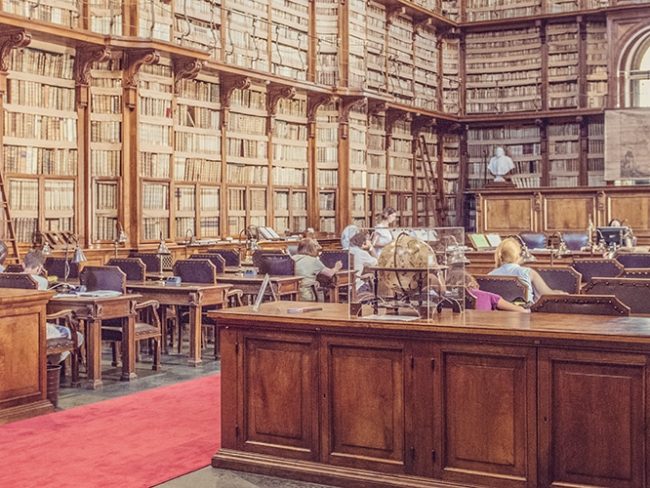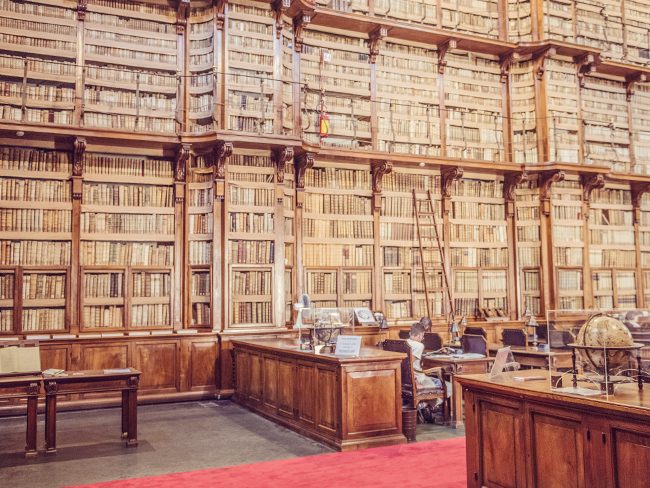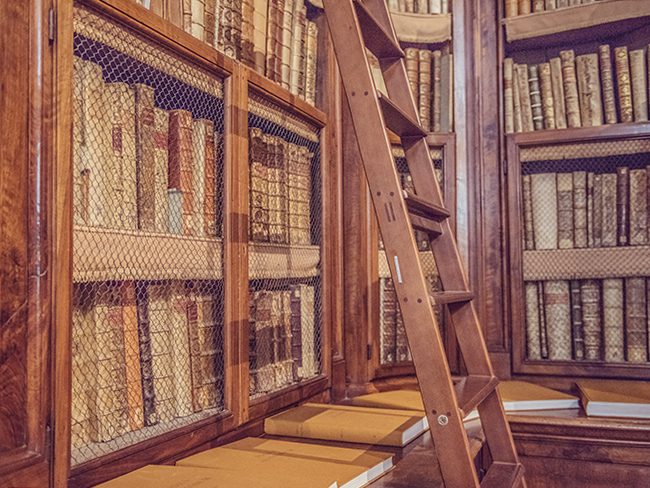I love working as a professional editor.
It’s like being a tailor who works away quietly behind the scenes.
We help writers present their words in the best possible way, leaving no part of our own voices behind.
When an audience applauds our client’s speech, compliments our author’s story or pens great reviews about their book, we’re quietly rejoicing because we know their success means we’ve done our job well.
So it shouldn’t come as a surprise that many editors are bibliophiles – that we cherish and collect books.
That when we travel, we look for historic libraries to explore.
When I hold a beautifully written and designed book in my hands I’m drawn to the meaning of its words, the texture of its paper and the scent of its pages.
I’ve found many remarkable libraries and bookstores in my travels. On my quest to find the oldest public library in Rome, I discovered Bibliotheca Angelica. It’s one of my favourites now, not only for its overall charm but its unforgettable interior.
In the early 1600s, when the Angelica opened its doors, books were generally kept under lock and key, or in chained libraries, such as the 15th-century Bibliotheca Malatestiana in Cesena and the Hereford Cathedral Library in England. It took thousands of hours of painstaking work to make a book.

They’d be copying text by hand, adding decorative elements, illustrations, page numbers and indexes before binding the pages together and adding a cover.
This made books expensive and valuable items. Medieval books sometimes had ‘book curses’ placed at the front, warning people that if they stole or defaced the book they would be cursed. (See Medieval book curse above.)
But, in a revolutionary step, the Angelica opened its door to all people with no class distinctions or government restrictions.
All they needed to access this remarkable collection of volumes, rare maps and other material was a curious mind, a yearning to read and a thirst for knowledge.
It was a momentous decision to grant ordinary people access to scholarly knowledge.
Looking back we can see that Bibliotheca Angelica and other early public libraries, such as the Milan’s Bibliotheca Ambrosiana, helped bring about the democratisation of education when, rather surprisingly, ordinary people were free to embrace the archives of history and knowledge.
Even for somebody accustomed to Rome’s ancient piazzas and cobblestone alleyways, it’s easy to get lost searching for the Bibliotheca Angelica.
The library’s humble street presence belies its importance as Rome’s oldest public library and one of the first public libraries in the world.

The entrance to the library provides no indication of its historical or the treasures within it.
Like the adjacent Basilica di Sant’Agostino, which is home to works by Caravaggio, Raphael and Sansovino, its riches are cloaked by a plain unassuming exterior.
Acquisitions dating back to the 13th century grace the ancient shelves of the Angelica.
These hand-inscribed manuscripts were bestowed upon the Monastery of Sant’Agostino before becoming part of the Angelica collection.
Some of them were donated to the

Augustinians by Roman nobles in previous centuries.
Safely stored within its walls are 1100 incunabula, which are books or broadsides printed in Europe before the year 1501, when books were printed using metal type.
Rare incunabula in Rome’s oldest public library include a manuscript from the ninth century – the Liber Memorialis from Remiremont Abbey.
The first book printed in Italy, in 1465, De Otatore by Cicero is also in the Angelica library.
So, too, is one of the earliest copies of Dante’s Divine Comedy.
The person responsible for the founding of Bibliotheca Angelica was Bishop Angelo Rocca, who was born in Rocca in 1545.
He earned a doctorate in theology from the University of Padua, and went on to become head of the Vatican Printing House in 1585.
A renowned editor and book lover, his vast

collection of 20,000 volumes was incorporated into the Angelica’s collections.
The building and funds required for the library were provided by Bishop Rocca and, as mentioned above, it was on condition that the library would welcome all people, regardless of social status or income.
In 1873, the Angelica became the property of the Italian State, and in 1975 it became part of the Italian Ministry of Cultural Heritage and Environment.
You probably need to be a local or a determined tourist to find Bibliotheca Angelica, but once you step inside this ancient place it’s a remarkable feeling to be surrounded by millions of timeworn pages and their stories from the ages.
Rome’s oldest public library is a treasure worth searching for.
Bibliotheca Angelica is located at Piazza di S. Agostino 8, in Rome, Italy.
If you love reading about ancient libraries, you might also enjoy The library that Michelangelo designed in Florence.
If you’re interested in slow travel you’ll want to read How to have a slow travel experience.
Love writing about travel? Dive into my Slow travel writing tips and examples.
